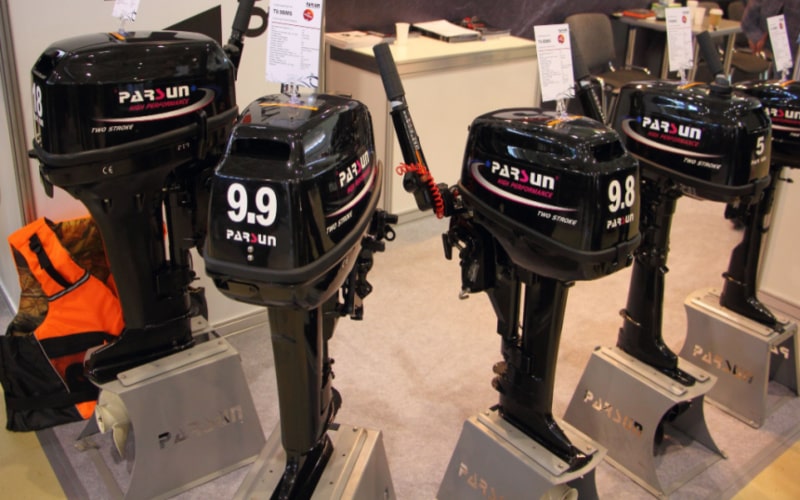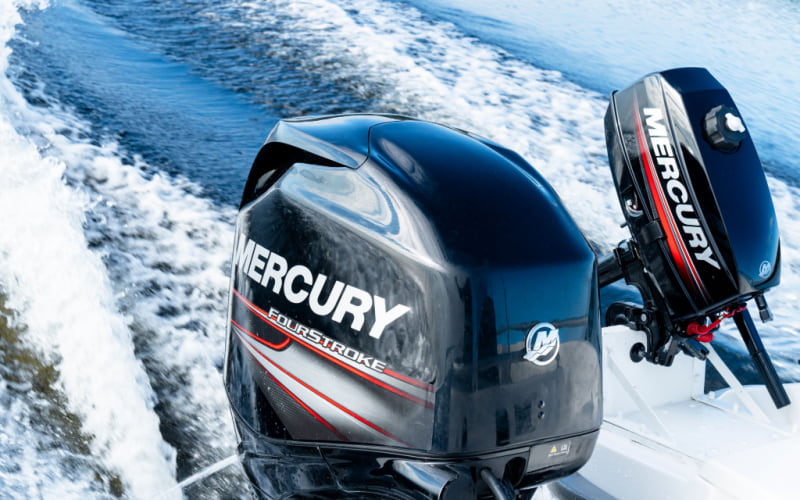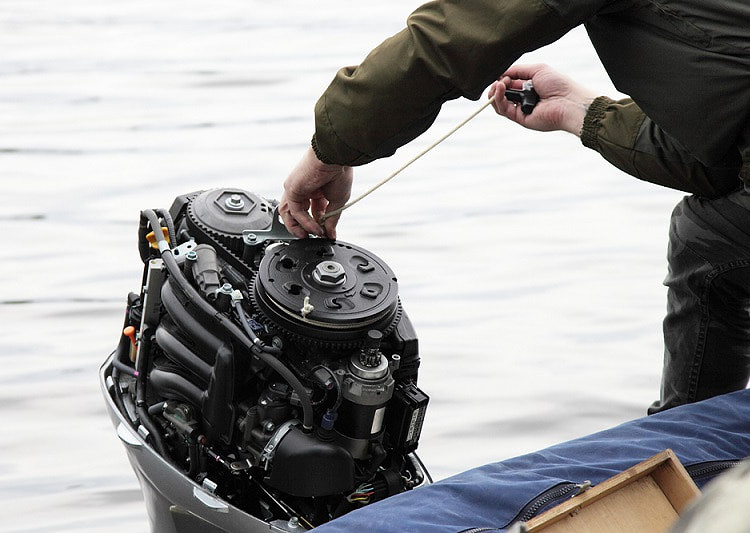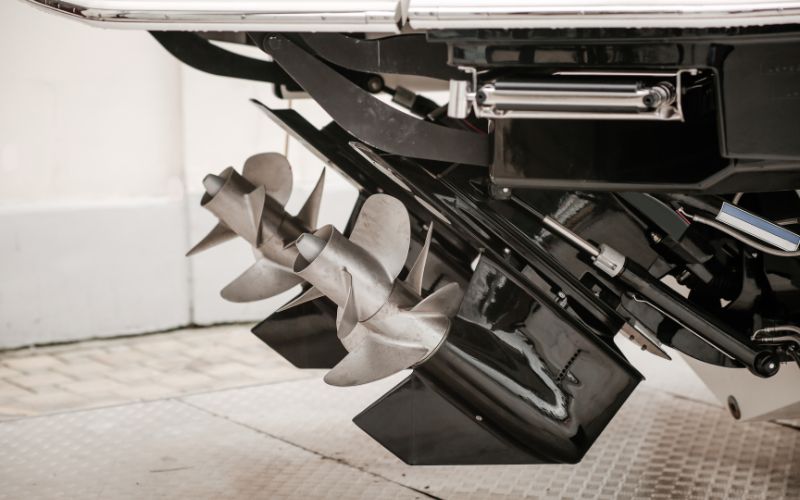If you have an outboard motor, chances are you have a starting battery hooked up to allow you to start your engine.
If your boat has radio, lights, fish finders, and other accessories, you may also have a deep-cycle battery or two for powering these accessories.
If your outboard has an alternator, it will be able to recharge these batteries while you’re out on the water, running your engine.
This, of course, begs a few questions:
Do all outboard motors have alternators?
How can you tell if your outboard has an alternator built-in? Can you add one if it doesn’t?
How long will it take for an alternator to recharge these batteries?
Keep reading! In this article, we’ll answer all of these questions and more.
Table of Contents
Do Outboard Motors Have Alternators?
Most electric-start outboard motors have alternators, especially the newer ones that were built in the last 20 years or so. That said, there are many different styles and designs in the outboard motor world, and not all of them are made the same.
Outboard motors are broadly categorized as either two-stroke or four-stroke motors. Let’s take a look at each of these motors and talk about whether or not they are likely to have an alternator or not.
1. Two-Stroke Motors

Modern two-stroke motors are generally smaller than four-stroke motors, and not all of them have alternators.
Generally speaking, if the motor is more than 10 horsepower, it probably has an alternator. If it’s under 10 horsepower, then it may or may not.
Older two stroke motors, even the larger ones, may or may not have an alternator as well. Some older models have a generator or magneto instead.
Again, it depends on the specific make and model of the outboard motor in question, as not all of them are made exactly the same.
2. Four-Stroke Motors

Four-stroke motors are generally larger and newer than two-stroke motors. They are far more popular than two-stroke motors these days, and nearly all of them have alternators.
There are a few four-stroke motors that don’t have alternators. Some older or smaller units may instead have a stator, generator, or magneto installed.
All of these systems recharge your batteries and allow the outboard to produce the power it needs, but an alternator is by far the most effective method.
Again, whether or not you have an alternator may depend on the size and age as well as the make and model of your motor.
3. Mercury Outboard Motors

Mercury is one of the most popular makers of outboard motors. All modern Mercury outboard motors have alternators.
That said, if you have a much older Mercury model, especially one that is small, it may have a stator or generator instead.
But any Mercury outboard made within the past couple of decades will have an alternator.
Other brands that use alternators in all of their modern motors include Honda and Seven Marine.
Some other brands, such as Yamaha and Suzuki, most likely use stators instead. Nearly all older brands, such as Tohatsu, Evinrude, and Mariner, will almost certainly have stators instead of alternators.
How to Know if My Outboard Has an Alternator
If you have a pull-start motor, it is likely that it doesn’t have an alternator.

If you have an electric-start motor, an easy way to check your outboard for an alternator is to start the engine, then apply a voltmeter to the battery terminals.
The motor should be running around high idle or mid-throttle–about 2,000 RPM. If you have an alternator, and it is working properly, the voltmeter should read between 13 and 15 volts while connected to the battery.
Of course, this isn’t a foolproof way of determining whether you have an alternator or not. You may get a lower voltmeter reading even if you do have an alternator and it is simply not working right.
The best way to determine if you have an alternator is to look under the outboard’s cowling, or cover.

Remove the outer cover of the outboard’s upper unit. You will see a lot of wires and metal components.
The alternator will be round in shape and probably encased in a plastic cover. It should be bolted to the motor, with a belt wrapped around a smaller circular wheel mounted on top of it.
If you can’t find it, check your owner’s manual or look for a diagram online to find out exactly where the alternator is located on your specific outboard motor.
Again, many older or smaller outboards won’t have alternators, so if you can’t find one on your engine, there’s a chance you don’t have one.
Can I Add an Outboard Alternator Kit?
If you have a small, older, or pull-start-style motor, chances are it doesn’t have an alternator built in. In these cases, it is possible to install one yourself.
You can buy an outboard alternator kit, or charging system, that is compatible with your specific type of motor.
To learn about how to install one of these systems, check out this article or watch the video below:
FAQ
Let’s take a closer look at some frequently asked questions that come up when discussing outboard motors and alternators.
1. How Long Does it Take an Outboard to Charge a Battery?
There is no one answer to this question; it depends on many factors, including:
- Size of battery: Larger batteries obviously take more time to recharge. The same is true of batteries that have been more deeply discharged; so, if you are recharging a heavily-used deep cycle battery, it will take longer than charging a starting battery.
- Charging rate: Alternators typically recharge your batteries at a rate of 6 to 10 amps per hour. Though it is possible to increase the alternator’s output and charge your batteries faster, you have to be careful, as doing so can damage the batteries.
- Battery draw: Battery draw refers to accessories such as boat lights and radios, fish finders, etc. These accessories will most likely be hooked up and drawing power from the battery even as the alternator recharges it.
If you only have a starting battery with nothing hooked up to it, it won’t take long to recharge. If you have a deep cycle battery with all your accessories pulling power from it, the battery may discharge at a higher rate than the alternator can recharge it.
2. Do Inboard Motors Have Alternators?

Inboard motors are essentially like outboard motors, only instead of being mounted on the outside of a boat’s transom, they are built into the boat’s hull.
Inboard motors function much the same as outboard motors do. With this in mind, most inboard motors have alternators.
This is particularly true of newer and larger inboard motors.
Conclusion
Most electric outboard motors today have alternators. Some have stators, which work very similarly to alternators.
A few older outboards may have a generator or magneto built in instead, and some smaller engines are pull-start and, thus, don’t have any recharging system at all.

I created this site to help people – to help you – with your boat problems. Instead of helping one person at a time, I want this website to be the “one-stop-shop” for everyone’s boating concerns. Read more.

